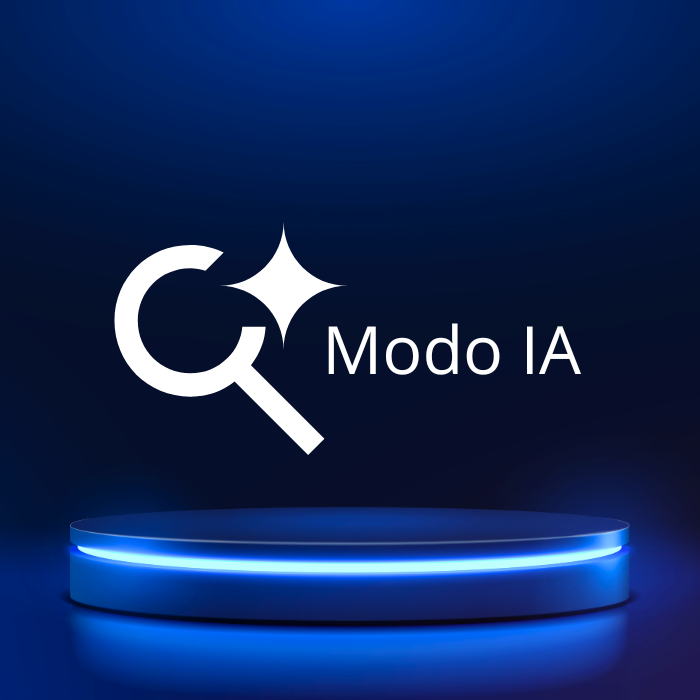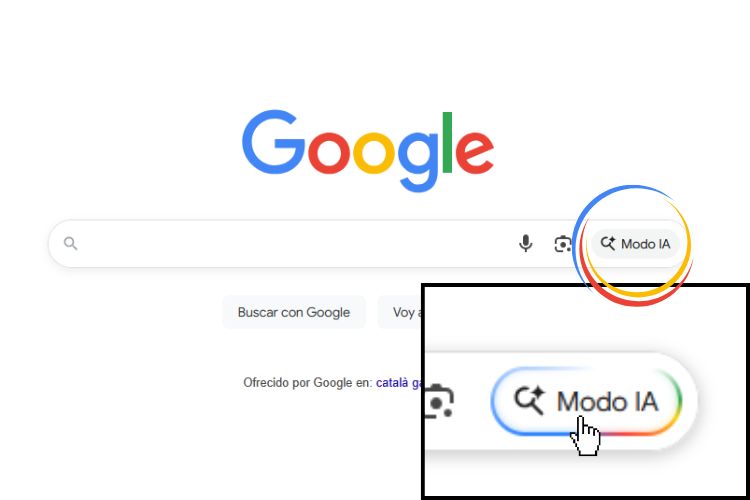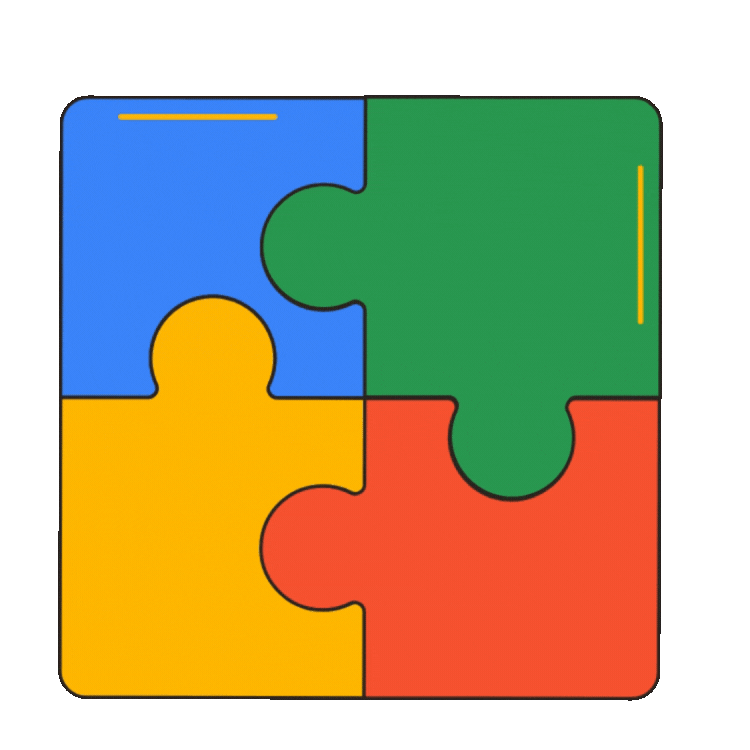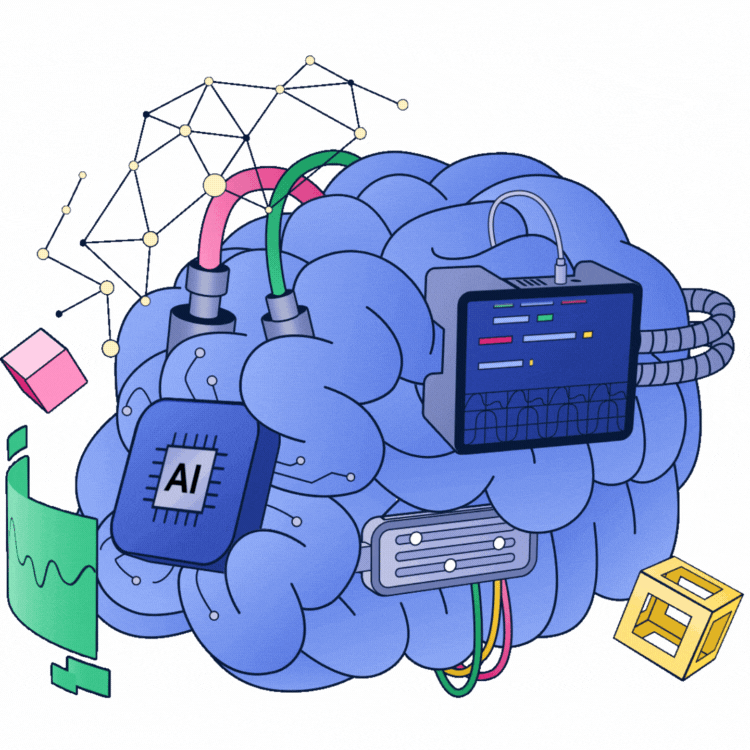Google AI Mode
What is Google AI Mode
Google has just taken the most important step since it invented its search engine: the arrival of Google AI Mode.
This new system integrates generative artificial intelligence directly into search results, transforming the classic list of blue links into intelligent summaries, contextual explanations, and much more comprehensive visual results.
Unlike the traditional search engine —which only displays pages related to a keyword—, AI Mode understands the user’s intent.
It can analyze a complex question, break it down into parts, and provide a reasoned, clear, and contextually adapted answer.
Instead of forcing you to visit multiple websites to gather information, Google synthesizes the answer directly on the screen, accompanied by links to the original sources for those who want to explore further.
This system is powered by the Gemini models, the evolution of the former Bard, and uses multimodal generative AI capabilities: it combines text, images, voice, and video to deliver much more natural and interactive responses.
In other words, it’s no longer just about “searching for information,” but about having a conversation with Google.
In addition, the rollout is already underway in Spain and 35 other countries, which means the era of conversational search has just begun.
And with it, a new stage is also starting for SEO, content marketing, and the digital strategy of any brand.

How Google AI Mode works and how to use it
AI Mode is not a magic button or a new app.
It’s a deep update to Google’s search engine that integrates artificial intelligence directly into the results page.
Instead of merely displaying a list of links, the search engine now generates a personalized and contextual response that combines text, images, graphics, and verified links.

Step by step: how it works
- The user performs a search, just like always.
But they can do it using natural language, full sentences, or even voice or images. - Google analyzes the intent behind the query. Its AI breaks the question down into subtopics and searches for the most relevant information across multiple trusted sources.
- The AI generates an intelligent summary. At the top of the screen, a block appears with a structured answer, illustrative images, and links to the sources used.
- The user can keep asking questions. Instead of starting a new search, you can continue the conversation with related questions —just as you would with an intelligent assistant.
Practical examples
Comparative search:
“Which smartphone is best for photography in 2025?”
→ AI Mode displays a visual comparison with advantages, specifications, and prices, along with links to review pages.
Educational query:
“Explain the difference between agentic AI and AI agents.”
→ Google provides a clear summary with definitions, examples, and links to reference articles (yes, even Xarxalia’s article could appear there 😉).
Visual search:
You upload a photo of a product or place and ask:
“Where can I buy this?” or “What building is this?”
→ The AI identifies the object and shows you purchase options or contextual information.
How to activate AI Mode
Google is gradually rolling out this feature in Spain and other countries.
It doesn’t require any download or special setup:
you just need to be signed in to your Google account and perform the search from Chrome, Android, iOS, or the web search engine.
If you don’t see it active yet, it’s just a matter of time: the feature is being gradually enabled for users registered in Search Labs, Google’s experimental testing program.
In summary, AI Mode doesn’t change how you search — it changes how you receive information.
What used to be a list of results is now a conversation guided by artificial intelligence, much more intuitive, natural, and useful.
The impact of AI Mode on SEO and content creators
The launch of AI Mode marks a turning point for web positioning.
For the first time in its history, Google no longer needs the user to click on a link to deliver a complete answer.
This radically changes the entire SEO ecosystem.
Until now, the goal of any digital strategy was to appear in the top search results.
With generative AI, the goal is to appear within the AI’s own answer.
In other words: if before you wanted to be on the first page, now you want to be inside the summary.
How it affects traffic and visibility
Fewer clicks, but more qualified ones.
Some informational searches will be resolved without leaving Google, which may reduce organic traffic.
However, the clicks that do come through will be from users with a genuine intention to go deeper or make a purchase, increasing the overall quality of the traffic.
Greater relevance of semantic content.
Google no longer analyzes just keywords — it now evaluates the depth, coherence, and real usefulness of the content.
Articles that provide complete, well-structured, and verifiable answers will have priority to be used by the AI in its summaries.
Shift of the “position 1” concept.
It’s no longer enough to optimize for snippets or featured fragments.
The new “top spot” is to be included in the paragraphs generated by AI Mode, where Google cites the sources it considers most trustworthy.


New SEO rules in the AI era
Optimize for intent, not just for the keyword.
Searches are becoming more natural and conversational. SEO must adapt to how people ask questions, not how machines read words.
Build authority and trust.
Google reinforces the E-E-A-T principle (Experience, Expertise, Authoritativeness, and Trustworthiness).
Content with real authors, verified sources, and demonstrable context will have a higher chance of appearing in AI responses.
Prioritize structural clarity.
Titles, subtitles, and logical structures are essential.
AI needs to understand how your content is organized in order to use it correctly in its summaries.
Integrate multimodal formats.
AI Mode combines text, images, and visual data.
The SEO of the future will be multi-format: content optimized to be read, listened to, and viewed.
The opportunity for brands
Far from being a threat, AI Mode opens a new era for brands that invest in valuable content, authenticity, and strategy.
Traditional SEO, based on volume and repetition, is losing ground to a smarter, more semantic SEO focused on user experience.
At Xarxalia, we sum it up like this:
“Content that answers questions will keep ranking;
content that builds trust will dominate AI Mode.”
How to prepare for the new era of intelligent search
Google’s AI Mode is not just an update — it’s the beginning of a new way of understanding SEO.
It’s no longer enough to rank for keywords; now it’s about being understood, cited, and trusted so that artificial intelligence chooses you as a source.
Next, some key steps to adapt your strategy:

Restructure for semantic understanding
Forget about keyword stuffing. AI looks for complete, contextual answers, not repetitions. Rewrite your pages as if you were speaking to a person: use questions, examples, natural explanations, and clear language. Use subtitles, lists, and logical structures so the search engine can understand the hierarchy of ideas.

Strengthen architecture and structured data
Google needs order and connection. Structure your pages with rich data (schema.org), coherent internal linking, and a clear content hierarchy. This helps the AI understand who you are, what you offer, and how your information relates to that of other trusted sites.

Review your authority and trust (E-E-A-T)
Artificial intelligence prioritizes sources with Experience, Expertise, Authoritativeness, and Trustworthiness. Include identifiable authors, verified citations, real cases, and original content. Your website should convey reliability to both users and algorithms.

Integrate AI tools into your own strategies
The future of SEO will be hybrid: human + AI. Use artificial intelligence systems to detect semantic keyword opportunities, optimize headlines, create content variations, or even measure visibility in AI environments such as Google’s new search engine.

Create multimodal and conversational content
AI Mode integrates text, image, audio, and video. Start thinking of your content as a complete experience: infographics, short clips, spoken or visual summaries that quickly answer users’ questions. And remember: Google doesn’t just read your texts — it also “observes” your brand.

Focus on user-centered SEO
The new SEO isn’t technical — it’s human.
Google evaluates whether your content truly helps.
Publish practical, contextual, and useful information with an authentic tone.
Because in the era of AI Mode, what the search engine values most is the same thing your clients do: clarity, credibility, and connection.
At Xarxalia, we guide companies through this paradigm shift, helping them adapt their SEO to the new AI-driven behavior without losing their brand identity or competitive edge.
The future isn’t optimized with formulas — it’s built with vision.
SEO doesn’t die — it evolves
Google’s AI Mode doesn’t mark the end of SEO, but the beginning of its reinvention.
The world’s most-used search engine has evolved from being an index of links to becoming an intelligent assistant — one capable of understanding human language, providing reasoned answers, and connecting ideas.
But that doesn’t mean the work of ranking disappears — it means it evolves.
The brands that will thrive through this change are those that understand the new SEO isn’t about talking to Google, but talking with it.
The challenge lies in adapting: creating purposeful content, providing real value, and building a digital presence based on trust.
AI no longer looks just for keywords — it seeks coherence, authority, and authenticity.
At Xarxalia, we’ve been preparing for this moment for years.
Our work isn’t just about optimizing websites — it’s about helping companies engage in dialogue with artificial intelligence:
to position themselves in the new era where algorithms think, search engines speak, and the brands that communicate best are the ones that shine the brightest.
The future of SEO is no longer about chasing clicks.
It’s about being part of the answer. And in that conversation between humans and artificial intelligence, Xarxalia is here to ensure your brand continues to have its own voice.

“Kevin makes your website 100% built to succeed in Google AI Mode”
FAQs
What is Google AI Mode?
Google’s AI Mode is a new form of search powered by generative artificial intelligence.
Instead of showing only links, it provides contextual summaries, explanations, and comparisons, combining text, images, and verified sources.
Its goal is for the user to understand information — not just find it.
How does AI Mode work?
The system uses the Gemini model, developed by Google, to analyze queries semantically.
When you perform a search, the AI interprets the intent, divides the question into subtopics, and generates a complete answer.
It also allows you to keep asking questions — like in a conversation —, make voice queries, or upload images to get contextual information.
How do you activate AI Mode in Spain?
AI Mode is being rolled out progressively.
You don’t need to install anything: just use the search engine from Google Chrome, Android, iOS, or the web browser while signed in to your Google account.
In some cases, it appears sooner if you’re enrolled in Search Labs, Google’s experimental testing program.
What impact does AI Mode have on SEO?
The impact is enormous.
Google no longer limits itself to showing results — it now generates answers directly on the page.
This may reduce organic clicks, but those that do come will be more qualified.
To rank now, brands must create semantic, trustworthy, and well-structured content that can be cited by the AI as a relevant source.
How can companies adapt to this new model?
Companies should review their SEO strategy with a more human and semantic approach:
- Write with real questions in mind, not isolated keywords.
- Structure information well and strengthen its authority (E-E-A-T).
- Use structured data and clear internal linking.
- Focus on multimodal content (text, image, video, and audio).
At Xarxalia, we help brands optimize their websites for AI Mode, ensuring visibility, consistency, and long-term positioning.
Will SEO disappear with artificial intelligence?
No, SEO doesn’t disappear — it evolves.
The goal is no longer just to appear in the first position, but to be the source the AI uses to generate answers.
The principles of SEO — clarity, usefulness, and relevance — remain the same, but they now apply to a smarter environment where the real value of content makes the difference.